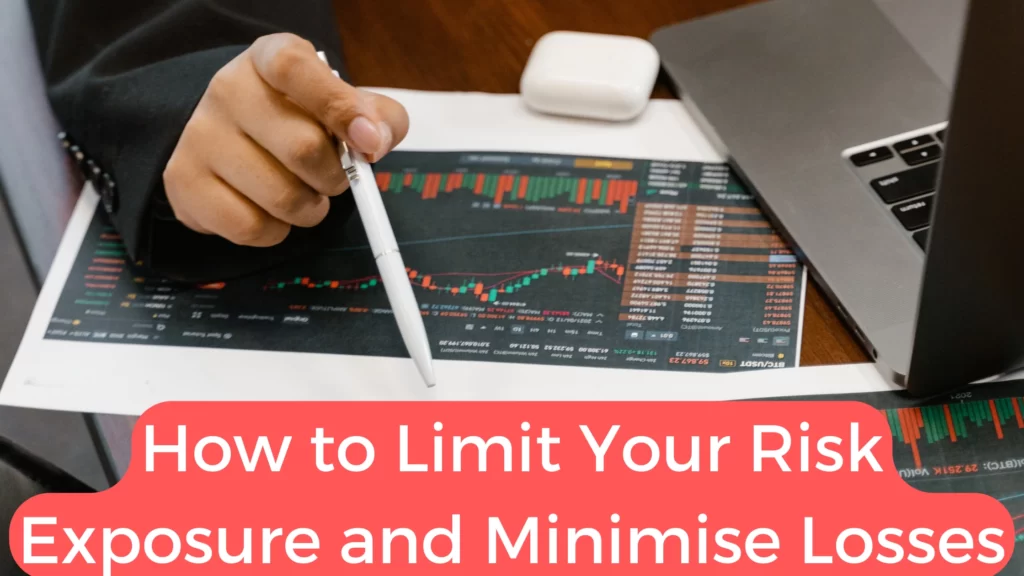
When trading in the stock market, it’s important to be aware of the risk. And how your actions may affect your profits and your losses. Please find out more about this as we explore 11 ways to limit your risk exposure and minimise your losses.
Identify your Trades
Trading is a high-risk, high-reward endeavor. However, there are some steps you can take to limit the risk of your trades. One way is to have a reputable broker manage your investments for you. Another way is to invest in managed funds so that you don’t have to worry about picking individual stocks. And understanding their associated risks.
Control Your Drawdowns
Drawdowns are one of the most important metrics in trading. They represent the difference between your opening equity and your ending equity. A drawdown is good when it has a negative value, meaning you make money over time. And if it is positive, you have a losing trade.
The hard part about drawdowns is that they are not predictable. However, many theories try to predict how high a drawdown will be. Being said, you can control your risk exposure and minimise losses by not taking on excessive risk.
Keep strict loss to 1% of Capital.
One of the most important and easily overlooked elements of risk management is to control how much total Capital can be loose at one time. That is accomplished by setting a maximum allowed loss percentage. The intent is to ensure that losses are never more than 1% (or whatever value you set)of your total Capital at any given time.
‘The very first rule we live by is: Never risk more than 1% of total equity on any trade.” -Larry Hite.
The hard part about drawdowns is that they are not predictable. However, many theories try to predict how high a drawdown will be. Being said, you can control your risk exposure and minimise losses by not taking on excessive risk.
Use Stop Loss Orders
Stop-loss orders are one of the most effective ways to control investment risk. Suppose your investment falls below a certain level. In that case, it triggers an automatic sale, limiting your losses and preventing you from making impulse decisions in the heat of the moment.
Limit Exposure to Leveraged Instruments
Leveraged instruments like derivative financial products, which include options and futures, are designed to amplify gains or losses. If you don’t know how the underlying product works, you may initiate trade without understanding the risk. Ensure that your trades have limited losses by avoiding high-risk strategies like borrowing money to buy shares of an investment.
Limit the Size of Your Positions
Trading in a small position size can help you control your risk and limit your losses if the trade goes against you.
Always trade with a stop-loss to limit my potential to lose. For example, say you’re trading with an Rs. 100,000 account and want to make sure you never lose more than 1%. If the support for your trade is at Rs. 105 and you set your stop at, say, Rs.110 (1%), then you can trade roughly 200 shares at a 20% position size. It should be noted that this equals about 5% of total trading capital, and an additional 1% of total trading capital is used as a cushion for overnight gapping.
Another option is to use a percentage of the ATR (Average True Range ). If the ATR is Rs. 0.50 for a stock, then you might use 1% of your total trading capital. Let’s say you have a $100,000 trading account and a stop at Rs. 110 would put you at 1% risk. You could also use 1% of the AT R. If the ATR is Rs. 0.50, then Rs. 500 would be used as a stop. It is recommended to use 1% of the ATR in Equity Markets.
Read Trade Better to Avoid 9 Most Common Day Trading Mistakes
Take Profits and Cut Losses When They Occur
Ideally, you want to take profits when they occur and cut losses when they happen. This is so that if your investment performs well and you’ve taken profits, then you can use that money to reinvest in other stocks. If your investment performs poorly and the losses haven’t been cut yet, then cutting them will limit the effect of the loss.
Don't Reinvest Losses and Ignore the Law of Averages.
While it’s not always possible to do this, one of the simplest ways to limit your risk exposure is to avoid reinvesting losses. When you start making trades with a loss, you’re taking on more and more risks that can easily lead to further losses. It can be tempting to try and earn back what you’ve lost, but ultimately it’s a bad idea. You need to pay attention to what the law of averages tells you. if your account starts showing consistent losses, stop trading until you’re confident in your strategy again.
Use Risk Management Strategies
There are many ways to limit your risk exposure and minimise potential losses. The first way is to avoid taking unnecessary risks. This means only buying stocks when they’re at an attractive price level and avoiding investments like penny stocks. Another way is to diversify your portfolio by investing in different types of securities, such as stocks and bonds. You should consider shortening the duration of your investment so that you don’t have to worry about a single stock for too long.
Avoid the risk of ruin.
Limit your risk exposure with a sound trading strategy. Your risk of ruin is the probability that you’ll lose so much money and be incapable of continuing trading due to financial or emotional reasons. Setting a personal breaking point for trade losses is a matter of your individual account management abilities.
Your breaking point may vary depending on your financial and emotional pain thresholds. Some people may feel ruined after a 25% drawdown or a 50% drawdown on equity. In contrast, others can recapitalise and keep trading until they are successful. How do you plan for this?
Risk / Reward Ratios
When you know how to create a risk/reward ratio, it’ll become easier to evaluate the risks and rewards of any investment. You’ll be able to see which investments are worth the risks they carry and which ones might be too dangerous. The risk/reward ratio is a simple concept that many people don’t understand. It’s the idea that you should be able to evaluate your potential return by comparing it to the risk you’re carrying.
So, if you expect to get 10% in return and there’s a chance of losing 20%, your expected return is 2:1. That means that for each 1% risk you take, you should expect to get 2%. If an investment has a higher risk than this ratio, you may want to think twice before investing in it. On the other hand, if the risk is lower than 2:1, it might be worth the risk.
Your expectation of reward on a trade entry should always be a multiple of the risk on your stop-loss placement. Taking a chance on winning three dollars for risking one dollar is a better strategy. Then taking one chance and getting only one dollar.
Conclusion
After reading this article, you should have a better understanding of how to limit your risk exposure. Be sure to take the time to think about how your investing strategy will affect your risk tolerance level and be sure to avoid risky funds that could potentially cause you major losses.


